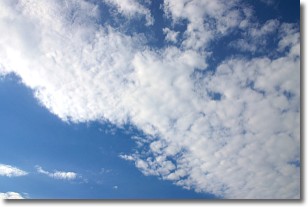Weather Alert in New York
Heat Advisory issued August 10 at 2:48PM EDT until August 13 at 8:00AM EDT by NWS Burlington VT
AREAS AFFECTED: Northern St. Lawrence; Northern Franklin; Eastern Clinton; Southwestern St. Lawrence; Grand Isle; Western Franklin; Western Chittenden; Western Addison; Eastern Franklin; Eastern Chittenden
DESCRIPTION: * WHAT...Heat index values in the mid 90s after multiple days with values above 90. * WHERE...In New York, Eastern Clinton, Northern Franklin, Northern St. Lawrence, and Southwestern St. Lawrence Counties. In Vermont, Western Addison, Eastern Chittenden, Eastern Franklin, Grand Isle, Western Chittenden, and Western Franklin Counties. * WHEN...From 8 AM Tuesday to 8 AM EDT Wednesday. * IMPACTS...An extended duration of hot temperatures may cause heat illnesses. * ADDITIONAL DETAILS...There will be little relief Tuesday night with low temperatures only cooling to around 70 degrees. Structures will not efficiently cool off in these conditions. Heat impacts are cumulative, and those without access to adequate cooling will be at the most risk to developing heat related illnesses.
INSTRUCTION: Drink plenty of fluids, stay in an air-conditioned room, stay out of the sun, and check up on relatives and neighbors.
Want more detail? Get the Complete 7 Day and Night Detailed Forecast!
Current U.S. National Radar--Current
The Current National Weather Radar is shown below with a UTC Time (subtract 5 hours from UTC to get Eastern Time).

National Weather Forecast--Current
The Current National Weather Forecast and National Weather Map are shown below.

National Weather Forecast for Tomorrow
Tomorrow National Weather Forecast and Tomorrow National Weather Map are show below.

North America Water Vapor (Moisture)
This map shows recent moisture content over North America. Bright and colored areas show high moisture (ie, clouds); brown indicates very little moisture present; black indicates no moisture.

Weather Topic: What are Stratus Clouds?
Home - Education - Cloud Types - Stratus Clouds
 Next Topic: Wall Clouds
Next Topic: Wall Clouds
Stratus clouds are similar to altostratus clouds, but form at a
lower altitude and are identified by their fog-like appearance, lacking the
distinguishing features of most clouds.
Stratus clouds are wider than most clouds, and their base has a smooth, uniform
look which is lighter in color than a nimbostratus cloud.
The presence of a stratus cloud indicates the possibility of minor precipitation,
such as drizzle, but heavier precipitation does not typically arrive in the form
of a stratus cloud.
Next Topic: Wall Clouds
Weather Topic: What are Altocumulus Clouds?
Home - Education - Cloud Types - Altocumulus Clouds
 Next Topic: Altostratus Clouds
Next Topic: Altostratus Clouds
Similar to cirrocumulus clouds, altocumulus clouds are
characterized by cloud patches. They are distinguished by larger cloudlets
than cirrocumulus clouds but are still smaller than stratocumulus clouds.
Altocumulus clouds most commonly form in middle altitudes (between 2 and 5 km)
and may resemble, at times, the shape of a flying saucer.
These uncommon formations, called altocumulus lenticularis, are created by uplift
in the atmosphere and are most often seen in close proximity to mountains.
Next Topic: Altostratus Clouds
Current conditions powered by WeatherAPI.com




